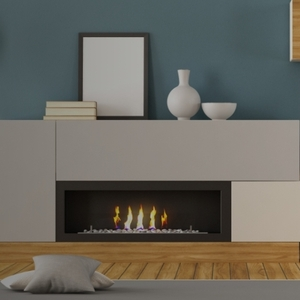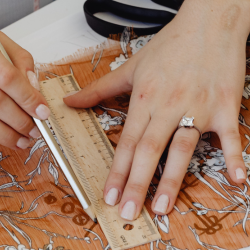Interior design is more than just decorating a space—it’s about shaping functional, aesthetic, and innovative environments that align with a client’s lifestyle and needs. It combines creativity with practicality, blending design principles, materials, and technology to transform ordinary spaces into inspiring ones. With rising demand for well-designed homes, offices, and commercial spaces, interior design has become one of the most dynamic career paths in the creative industry.
In this article, you’ll learn about the different career opportunities in interior design, the skills you need to succeed, challenges professionals face, and the future scope of the industry. Whether you’re a student exploring career options or someone passionate about design, this guide will give you a clear roadmap to understanding interior design jobs and what it takes to build a rewarding career.
Contents
Who is an Interior Designer?
An interior designer is a professional responsible for planning, conceptualizing, and executing designs for residential, commercial, or public spaces. Unlike decorators, interior designers combine creativity with technical knowledge to balance both aesthetics and functionality. The role of an interior designer involves client consultation, space planning, material selection, lighting design, and ensuring safety and sustainability. An interior designer job description usually includes working with architects, contractors, and clients to turn empty rooms into well-designed, practical spaces. Some designers even specialize in areas like luxury homes, corporate offices, or eco-friendly projects. Skills Required to Succeed in Interior Design Success in Interior Design Jobs requires a mix of creative, technical, and interpersonal skills.- Creative Thinking: Interior designers must visualize how a space can be transformed and come up with innovative ideas that meet client expectations while staying within budget.
- Attention to Detail: From color palettes to furniture placement, even small details can make or break a project. Accuracy and precision are critical in this profession.
- Communication and Visualization: Designers need strong communication skills to present their ideas clearly to clients and collaborate with architects or contractors. Visualization tools like 3D rendering software also play a big role.
- Technical Knowledge: Beyond creativity, technical skills are essential. This includes understanding design software (AutoCAD, SketchUp), lighting systems, building codes, and safety regulations.
Educational Pathways to Become an Interior Designer
There’s no single path to becoming a designer, but most professionals pursue formal education to build credibility and technical expertise. Interior Design Courses: A diploma in interior design and certificate courses are great starting points for beginners. They cover design principles, drawing, and the basics of space management. Degrees and Certifications: A bachelor’s or master’s degree in interior design offers deeper training in architecture, material science, and design technology. Advanced certifications can also boost career prospects, especially internationally. Internships and Practical Training: Internships provide real-world experience and a clear understanding of what an interior designer job description looks like in practice. Working under experienced designers or firms helps you develop project management skills, client handling, and industry insights.Career Opportunities in Interior Designing
The scope of Interior Design Jobs is vast, with multiple specializations available depending on your interest and expertise. Residential Interior Design: Designing homes, apartments, or luxury villas. This area focuses on personalization, comfort, and aesthetics. Commercial and Office Design: Creating functional and attractive spaces for offices, retail stores, restaurants, and hotels. The emphasis here is on efficiency, brand identity, and customer experience. Set and Exhibition Design: A highly creative field where designers work on film sets, theatre productions, and trade exhibitions. It demands quick turnaround times and innovative thinking. Furniture and Lighting Design: Some interior designers specialize in furniture or lighting, crafting unique pieces that enhance both the beauty and functionality of a space. Sustainable Design: With growing awareness of eco-friendly practices, sustainable design has become a rising trend. Designers focus on using recycled materials, energy-efficient lighting, and environmentally safe layouts.Salary Trends and Career Growth in Interior Design
The earning potential in Interior Design Jobs depends on experience, specialization, and location. Entry-level professionals may start with modest salaries, often working as assistants under senior designers. An interior designer assistant job description usually involves supporting senior designers with research, drafting, and client meetings, which builds the foundation for future growth. With experience, designers can command higher salaries, manage their own firms, or work on high-profile projects. In metropolitan cities like Delhi, Mumbai, and Bangalore, interior designers can expect higher pay scales compared to smaller towns. International opportunities also open up for those with advanced qualifications and portfolios.Challenges in the Interior Design Profession
While interior design is rewarding, it does come with challenges. Meeting client expectations can be tricky, especially when visions change during a project. Designers also need to be creative while working within strict budgets and ensuring quality materials. Tight deadlines add to the pressure, as projects often involve coordinating with multiple vendors and contractors. Another hurdle is the fast-changing nature of trends—what’s in today may be outdated tomorrow—so designers must constantly update their skills and stay relevant. Alongside this, competition in the field is intense, making it essential to stand out with fresh ideas and a strong portfolio.Future Scope of Interior Designing in India and Abroad
The demand for skilled interior designers is growing rapidly in India, fueled by urbanization, rising disposable incomes, and an increased focus on lifestyle. Abroad, interior design also continues to expand, especially in countries with booming real estate and hospitality sectors. As technology evolves, future Interior Design Jobs will also involve smart homes, AI-driven layouts, and sustainable design innovations. This makes it a promising career for creative and forward-thinking individuals. Preparing for common interior design interview questions can also help aspirants showcase their skills and stand out in this competitive field. FAQs Q1. What qualifications are needed to become an interior designer? To pursue a career in interior design, you typically need a diploma, bachelor’s, or master’s degree in interior design or architecture. Short-term certification courses can also help beginners gain foundational knowledge.Q2. Is interior design a good career choice in India?
Yes, interior design is a growing field in India with strong demand in residential, commercial, and luxury sectors. With the right skills and portfolio, you can build a rewarding career in both local and global markets.Q3. What is the future scope of interior designing as a career?
The scope is bright, with opportunities in sustainable design, luxury interiors, and international markets. As urbanization grows and people invest more in personalized living spaces, Interior Design Jobs will continue to flourish.(Visited 25 times, 1 visits today)
Popular Search
Top 10 DJ India
Makeup Steps
Advantages of Makeup
Interior Designer Salary
Makeup Artist Course
Benefits Of Photography
Hospital Waste Management
Types of Fashion Designing
Types of Lenses in Photography
How to Become a Radio Jockey
Best Nutrition Courses in India
Importance of Media Management
How To Become a Dietitian in India
Importance of Nutrition in Health
Interior Design History and Origins
Top 10 Famous Interior Designers
Top 10 Music Labels in India
Top 10 Best Animation Studios in India
Top 10 Nutraceutical Companies in India
Top 10 Fashion Designers in the World
How To Write a TV Commercial Script
Top 10 Career Opportunities in Fashion Designing
Advantages and Disadvantages of Animation
























